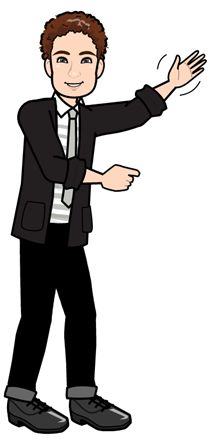I. WHAT´S THE FUNCTION OF “USED TO”?

The verbs ‘used to + infinitive’ are employed to talk about past habits and repeated actions which no longer happen in the present. They NO LONGER exist. These habits could have been done with different frequency in the past. For example:
- I used to play several musical instruments when I was younger.
- Did you use to learn poems when you were in High School ?
- I didn´t use to eat healthy food when I was a teenager, but now I do
.
- Tom didn’t use to type fast enough. Now he has a 230 wpm score.
- Did your parents use to travel a lot with you
when you were a child?

II. BE + USED TO + VERB (-ING)

We also use “be used to” to talk about situations or things which we are (or are not) accustomed to. These are usually familiar or common to us. The key player in this grammar point is TO BE ( I am, you are, he is, etc. / I was, you were, he was, etc. / I am not, you aren´t, he isn´t, etc., I wasn’t, you weren´t, he wasn´t, etc.,). Here are some examples:
- My brother is used to working long shifts at work.
- I wasn’t used to living in places where the weather is hot.
- Were you used to staying up late when you were in High School?
We follow these patterns:

III. GET USED TO + VERB (-ING)
We use “to get used to + verb (-ing)” to talk about situations or things that are becoming habitual for us. These situations are in process and in a transitional period.
- Shawn moved to New York and he got used to living there quickly.
- Jackie signed up for a cooking course. She didn’t get used to having a new routine.
- Have you gotten used to driving all the way to your workplace?

IV. BE USED TO + GET USED TO + NOUNS (THINGS, OBJECTS, CUSTOMS, ETC.,)

“Be used to” and “get used to” can ALSO be followed by a noun. For example:
- I am used to the cold weather.
- She is used to the city.
- Are you used to the noise?
Get Used to + noun _ For instance:
- I got used to the new software easily.
- Fred didn’t get used to the busy life in Mexico City.
- Have they gotten used to the new education system yet?
- So you don´t like working nights? Don´t worry, you´ll soon get used to them.
V. CONSOLIDATION
VI. EXERCISE
Choose a, b or c to complete the following sentences correctly
VII. READING COMPREHENSION AND VOCABULARY BUILDING

COMMUTING IN AMERICA
(I) The expanding size of metropolitan areas in the United States is having substantial repercussions for commuting and travel time. This geographical expansion has largely been driven by the desire among Americans for bigger, better, cheaper housing in suburban areas. As workers have moved, employers have followed. Yet these shifts in the location of workplaces have not led to shortened commutes. Rather, they have allowed workers to move even further from the city center in search of cheap housing and enabled workers living in rural areas and even other metropolitan areas to compete for those jobs.
(II) Another complicating factor in commuting patterns is that an increasingly large number of people do not drive directly to and from work; they stop multiple times along the way: to buy coffee in the morning, to drop off and pick up children at day care or school, to visit the gym, to buy groceries, and so forth. These “trip chains” save time and have probably been the central factor in the continued growth of single-occupancy vehicles (SOVs). At the same time, this commuting pattern makes alternatives such as transit and carpooling even less attractive.
(III) Yet another factor complicating commutes is that the length of the peak morning and evening commuting periods has increasingly lengthened. For instance, the number of people beginning their commutes before 6 a.m., and even 5 a.m., has risen significantly. Consequently, worker schedules and commuting flow patterns continue to make alternatives to the SOV problematic, with one exception: working at home is the only “mode of transportation”, other than driving alone, that has grown throughout the last ten years. Aided recently by the telecommunications revolution, it has now passed walking as a way to get to work.
(IV) Steve Mackenzie, a 46-year-old-employee from Nebraska told us his commuting story_“I used to drive to work every day. The commute took almost 45 minutes each way, so the total time in the car amounted to over an hour daily. It used to bother me to some extent, especially when I started to think about how much time and money I spent in travel expenses. Driving to work was also a daily nerve-racking experience. Traffic congestion and construction delays would create unsafe driving conditions. It was also frustrating to drive during rush hour. Heavy traffic in the morning forced me to leave early so that I would not be late for work. Then, on days when it snowed or when there was ice on the highways, I was concerned about losing control of my car and crashing into another vehicle or driving off of the road completely. So when I changed jobs and found something closer to home, I was happy to learn that I had good alternatives to driving: I could ride my bike to work, I could take the bus, or I could walk. Now I try to ride my bike or take the bus whenever it’s possible. I also like to walk. It doesn’t matter if it takes an hour to walk to work. An hour of walking counts as an hour of exercise, which is healthier for me”.
PRACTICE I.
Choose the correct answer to complete the following sentences correctly.
BIBLIOGRAPHY
Azar, B. S., Azar, D.A., & Koch R.S. (2009). Understanding and Using English Grammar. Longman.
Barker C. and Mitchell, L. (2004). Mega 1 (First Ed.). Macmillan Publishers.
Hewings, M. (2013) Advanced Grammar in Use with Answers: A Self-Study Reference and Practice Book for Advanced Learners of English. CUP
Murray, L. (2014) English Grammar. Cambridge University Press.
WEB RESOURCES
Images 1,2 & 3 _ Personal subscription to Pixton
REFERENCES
Charts 1,2,& 3_Own source .
Images in Charts 1,2 & 3_ https://www.freepik.com/free-vector/smiling-boys-girls-pointing-banners-blank-empty-posters-sheets-paper-with-copy-space-set_22655987.htm#query=cute%20characters&position=40&from_view=keyword
CREDITS
- (2021) Practice exercise written by Connie Reyes_Language Department at ENES-LEON UNAM
- Audio version performed by Sally and Matthew_Voicemker_Text to Speech Converter_Connie Reyes 2022 Subscription
- (2021) Practice exercise written by Connie Reyes-Cruz_Language Department at ENES-LEON UNAM
- Article by Alan E. Pisarski Published in Winter 2017. Text retrieved and adapted from https://issues.org/realnumbers-22/ - Vol. XXIII, No. 2.
- (2021) Practice exercises written by Connie Reyes-Cruz_Language Department at ENES-LEON UNAM
- Audio version performed by Sally/ Matthew_Voicemaker_Text to Speech Converter_Connie Reyes 2022 Subscription
- Free stock photos_ https://www.pexels.com/es-es/foto/foto-aerea-de-vehiculos-en-la-ciudad-1031698/ Photo by Alexandr Podvalny from Pexels.